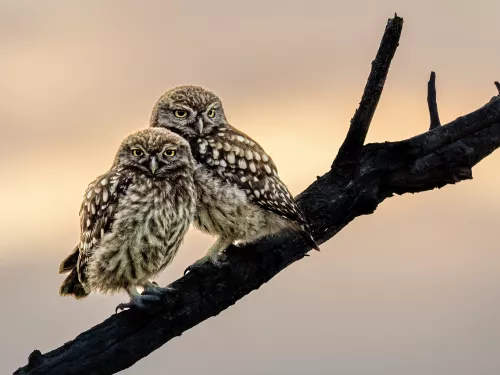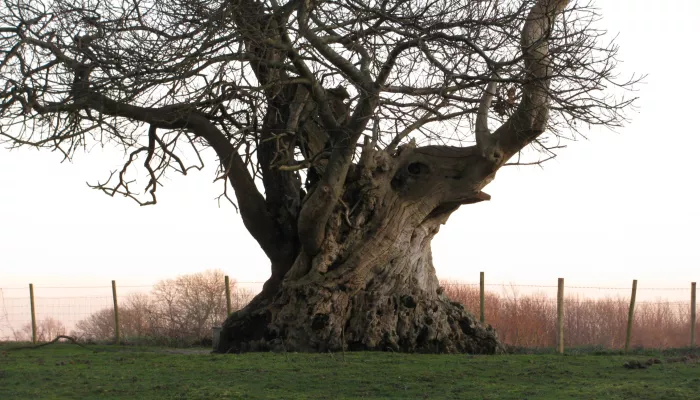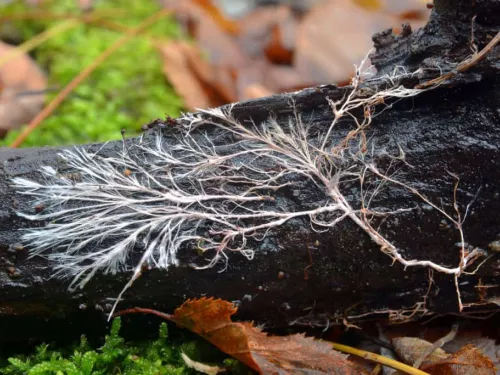
If you go down to the woods today – 9 surprising animals to look out for amongst the Kentish trees
Volunteer Matt Huggins explores some of the lesser-known but still fascinating animals that grace our woodlands.

Silver birch are the makers of new woodlands. First to colonise and quick to establish themselves. They stand out for their striking white bark, iridescent in a shady woodland. Their leaves are light green, small and triangular shaped with toothed edges. In the autumn these leaves fade to yellow and drop to the floor in their thousands. As a monecious plant, both male and female catkins grow on the same tree, a technique evolved to help speed up sexual reproduction on the tree. In winter you’ll find the forest floor ladened with the seeds that didn’t manage to hitch a ride on an upward current, escaping from its parent and taking root further afield.
These trees support over 300 insect species including many moths such as the angle-shades, buff-tip and Kentish glory. They evolved a special mycorrhizal relationship with many mushrooms such as the wholly milk cap, birch milk cap and birch brittlegill. And they’re wood is home to the parasitic birch polypore mushroom which kills the trees off slowly until one day their tops fall to the forest floor, a feast for the insects below.
Often overlooked, the hawthorn is incredibly malleable in our landscape, forming great hedgerows or growing into a tall and multi-stemmed tree bursting with beautiful white flowers that are eaten by dormice in the spring. In the autumn those pollinated flowers turn into ‘haws’, a bright red fruit which can turn the whole tree red attracting migrating birds such as redwings, fieldfares and thrushes. As a hedgerow, the dense thorny vegetation in winter makes excellent shelter for all species of birds.
Hawthorn supports more than just birds and dormice – it’s also the foodplant for moth caterpillars such as the hawthorn moth, orchard ermine moth and many more. In winter, the hawthorn is easy to identify as it’s buds will appear slightly red on the brown bark, jutting out from the corner of a thorn – unlike the blackthorn whose buds will often be found on the thorn itself. Spot the difference between hawthorn that has been grazed and hawthorn that hasn't by looking at its thorns - when grazed, hawthorn produces a profusion of extra thorns to protect itself!
A stunning winter woodland tree with pale grey bark developing ridges with age. As understory trees they find comfort in the darkness of the woodland thickets. Quite often they stand out with twisted and gnarled trunks both seen in single stem or multi-stemmed form. The leaves alternate along the branches with a single leaf at the end. They’re oval with a pointed tip and the edges have a toothed margin. Like the silver birch, hornbeams are monecious and produce catkins. After pollination, the female catkins grow papery-winged fruits called samaras that are perfectly designed to fly the seeds as far away from the mother tree as possible.
A hornbeam hedge can keep its leaves all winter. Though browned and dead, they hang on to their place so delicately. This cover is perfect for birds to get shelter, roost and forage. The hornbeam is also a valuable food source for the nut tree tussock moth and its seeds are a great food source for finches, tits and small mammals in autumn.
In a forest, the common beech uses brute force to reach the top of the canopy and get access to light, often making it tower against the other trees in the landscape. Its smooth grey bark makes it the ideal canvas for many carvings though that doesn’t deter from the majesty of this tree. Common beech doesn’t mind calcareous soils which make it quite a regular sight on the chalky soils of Kent.
The leaves, like hornbeam are oval with a tipped end but unlike hornbeam, the edges are wavy (like the waves of the sea at the ‘beech’ – the way I was taught to remember the difference). The flowers hang like tassels from the young growing tips and once pollinated form into a hairy cup shaped fruit holding the seed or beech nut. Also known as beech masts these can come in huge numbers and are very tasty treats to wildlife, and the occasional human like myself, who likes to snack on a few nuts during their autumn walks.
Our only native maple and a delightful tree to witness in Autumn as the leaves turn hues of yellow and bronze. Field maples can grow up to 20 meters high and live for an astonishing 350 years. You can tell old bark as the ridges get more pronounced and corkier with age, especially noticeable in the twiggy branches. Field maple leaves are palmate, meaning they have a hand-like shape. Look closely and you’ll see five lobed sections on the leaves.
Maples are flowering trees with male and female reproductive parts on the same flowers. They’re hard to notice on older trees as they’re small and insignificant, however their pollen provides an excellent food source to insects. Once pollinated, the fruit turns into beautiful samaras with red tipped wings which many young children enjoy dropping from a height and watching them spiral to the ground. Look to the ground in winter and you should find many sumaras and leaves, a sure sign you’re standing by a field maple.
One of only three UK native conifers and our longest-lived tree, yews have a certain majesty and wisdom about them. You’ll often find them in churches by the graveyards representing themselves as a symbol of eternal life in Christian faith and earning them the nickname ‘Tree of the Dead’. It’s easy to identify most times of the year but more so in winter when it is one of the few trees still green. The needle like leaves grow out of either side of the stem ending in a pointed tip, differentiating it easily from pine trees which have leaves spiralling out of the stem in all directions. Yew is also dioicous which means that some trees are male, and some are female. The flowers start like green oval shapes with scales and then progressively get browner and acorn shaped with age.
Unlike most conifers, the yew tree has evolved a different dispersal method for its seed. The seed forms a specialised outgrowth called an aril which starts off as a green band around the seed and then grows, encasing itself around the seed, becoming fleshy and eventually turning red. The entirety of a yew tree contains toxic compounds called taxins except the flesh around the seed. This combined with its bright red colour make it an attractive treat to birds who eat the flesh and later pass the seeds out in their droppings.
Supporting more life than any other native British tree, the English oak is unmistakable in our landscape. We can be proud to house more ancient oaks than any other country in Europe, many of which stand mighty in parklands, gardens and the Capability Brown designed landscapes of the historic British manor houses we visit all over the country. Oak loves light and generally doesn’t do well when competing with other trees in a woodland. That’s why you see them standing proudly on their own in fields, hedgerows, and woodland edges.
The leaves form in bunches on the wood and have a characteristic deep lobing and little to no stem. Long yellow catkins form in May ready to spread their pollen in the wind and by autumn the typical acorns have formed. Oaks owe their high numbers to the Eurasian jay. This bird will collect fallen acorns and bury them further away. Though incredibly smart, the jay will bury so many acorns that they occasionally forget where one is hidden and then, the seed germinates. One of nature’s beautiful symbioses.
You can always tell you’re looking at an ash in winter because of its dark jet-black buds. Its flowers are quite spectacular looking too, borne onto bare bark before the leaves appear in early spring, starting off deep purple and then brightening to a red in summer.
They’re one of the last trees to come into leaf in the spring and when they finally do explode into green, they have wonderfully floaty compound leaves with 7-12 leaflets shaped like a lance. An important food source to many moths such as the privet hawk-moth, ash leaves also fall early, whilst they’re still green, letting light down onto the woodland floor and supporting more species such as wild garlic, dogs mercury and hazel.
Ash trees are a majestic winter tree undergoing a real struggle right now. As ash dieback sweeps the nation, it’s important to hold a place in our hearts for the ash tree. Numbers may dwindle over the next decade, but like all trees, ash will fight back. There will be ash trees that hold resilient genes, and the seeds of these trees will be used to bring ash back to its former glory.
Want to learn more about identifying trees in winter? Join us at Tyland Barn on the 30th November for a broad-leaved tree identification workshop.

Volunteer Matt Huggins explores some of the lesser-known but still fascinating animals that grace our woodlands.

Volunteer Matt Huggins explores the underground secrets of mycorrhizal networks and how they help trees to communicate with one another.

You hear “shark”, you think Jaws. Sadly, this is true for many of us… but then who hasn’t been slightly traumatised by Steven Spielberg’s enduring epic?